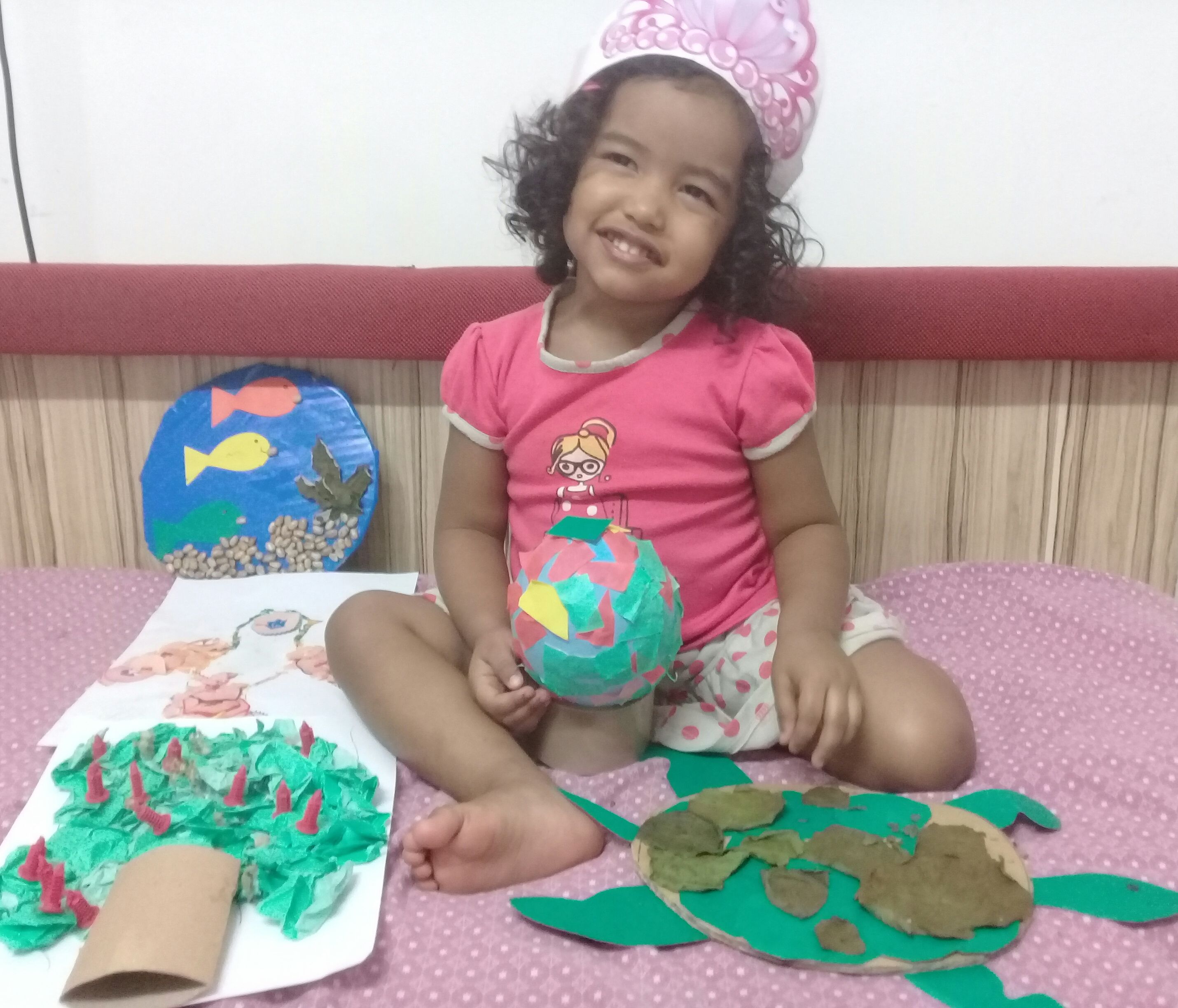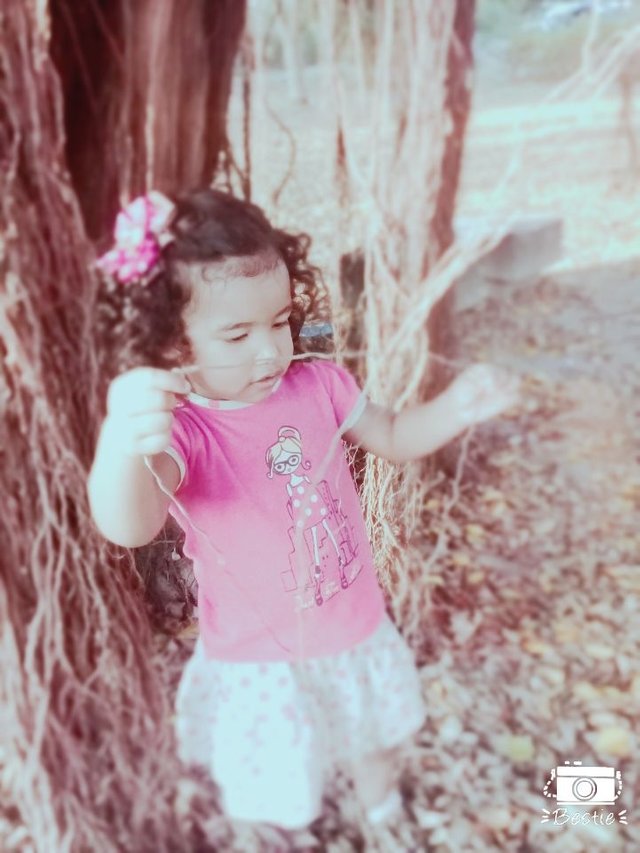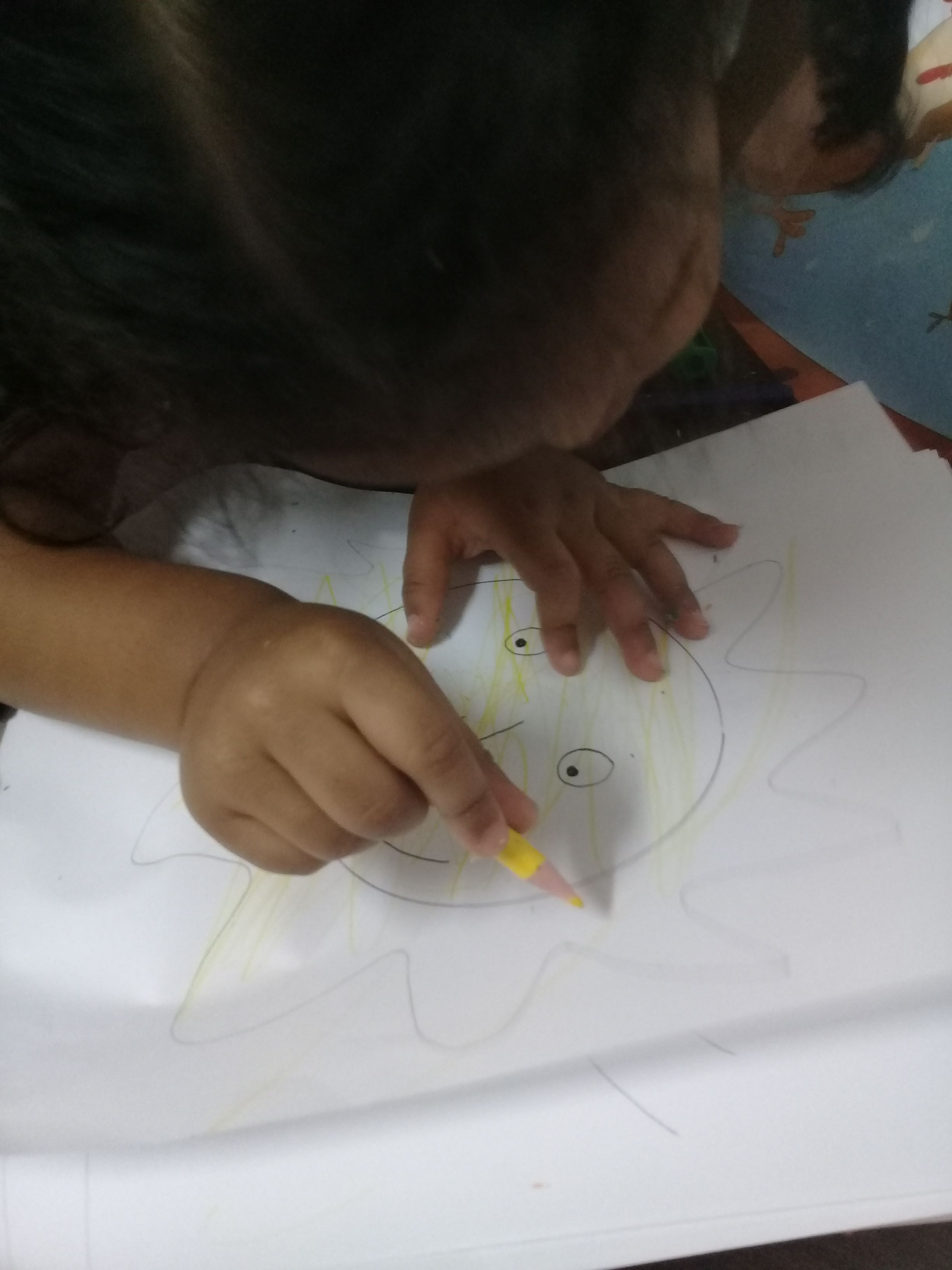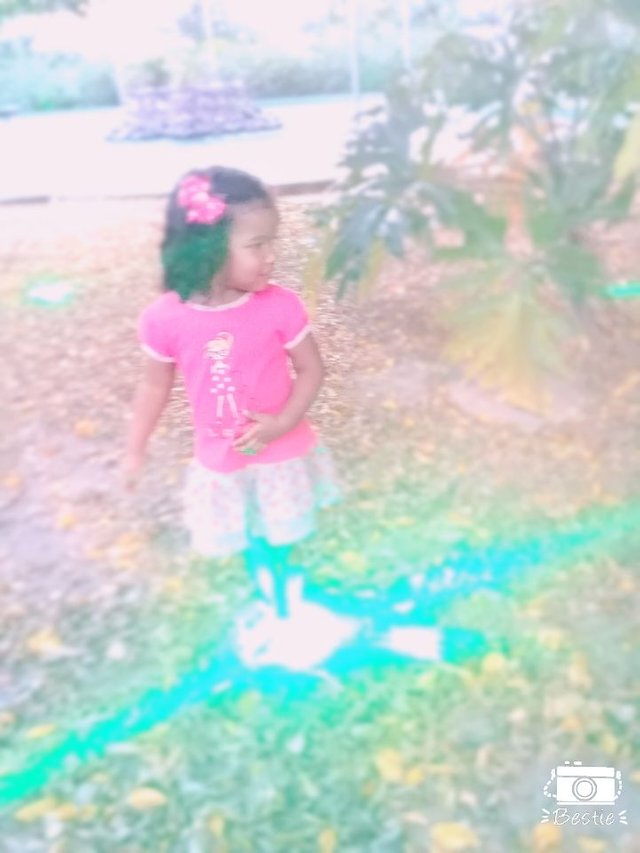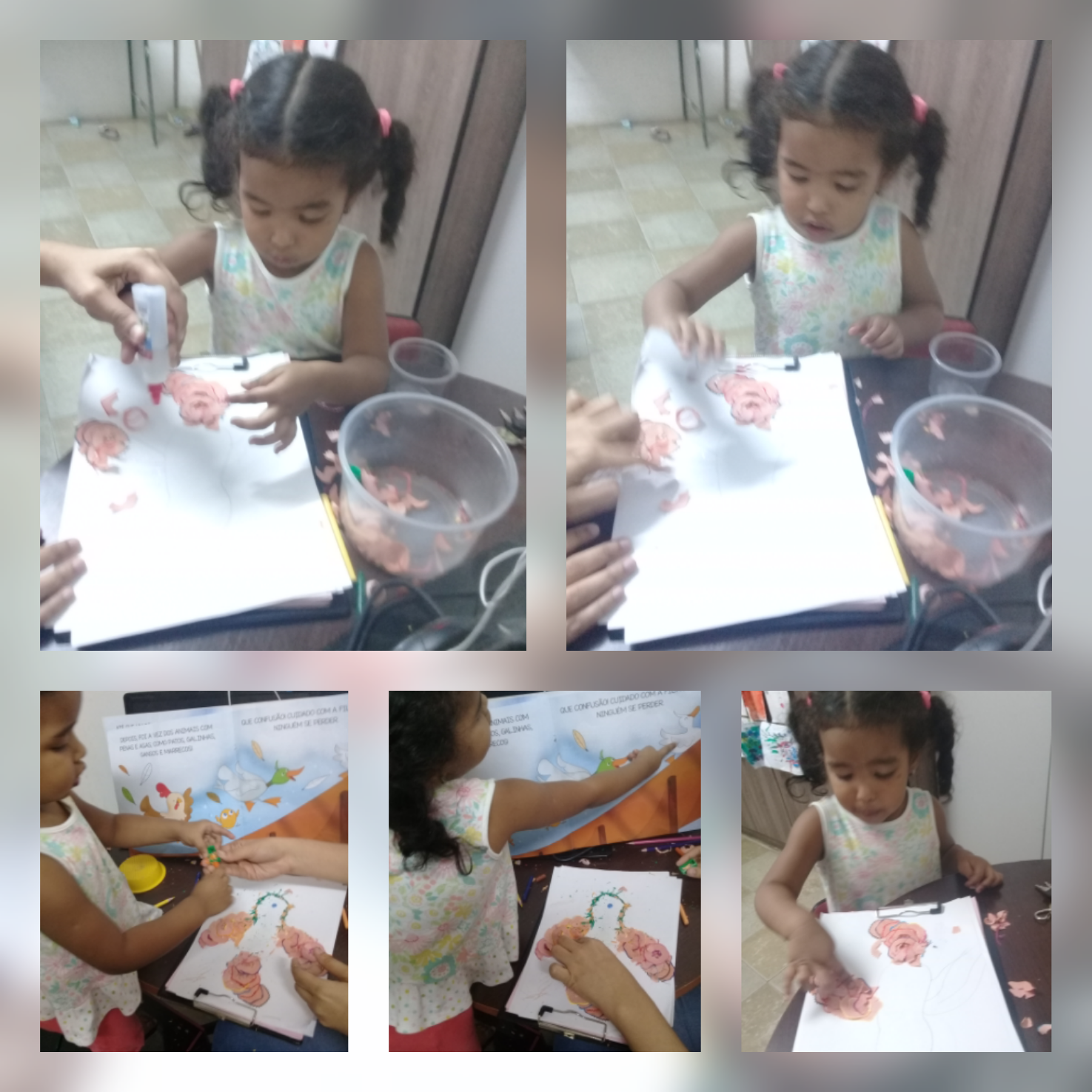HOW TO STIMULATE CREATIVITY IN CHILDREN? (homeschooling)
All people are creative, but with all the activities that are done with the frequency to become more creative. Children rely heavily on their parents to develop and encourage creativity.
How to do it?
First, we must teach our children to look around them, and every resource or element that has their disposition. Encourage them to experiment with textures, colors, aromas; every line of a flower is important for the child to perceive. This stimulates your curiosity, imagination and desire to create.
Children are born free to create, we should only guide them to continue to know their world, exercising their capacity for observation and perception, which allows them to have more the best elements when it comes to creating.
In the second place, we will create without limitations and excessive impositions, remembering that they have a perspective different from us as the world, for example, if you want to paint a yellow turtle and the red sun, it does not matter, little by little in others activities the association of colors and ludic fashion objects that the little ones the enchanting the idea of using the yellow color only to color the sun.
Other fundamental elements of the education-creative of our children:
Curiosity is learning through interest.
Never say something is so why "yes" or never answer "no" without explanation, your child's motive to learn, if you do not know the answer to any question, investigate, with two click on Google is enough to have the answer to your question Discover answers together, creates connection between the child and his parents.
Imagination is the ability to travel the world without leaving the place.
When we become adults we become logical, practical and rational; these characteristics are contrary to the imagination. The worst part is when we try to pass those characteristics on to our children, who just want to have fun.
To help to be small creators and not lose that quality, the adult can exercise small attitudes in the daily, such as accepting or encouraging alternative use of things.
Everything becomes a toy for children, even old boxes can be used as rockets or in a kitchen with the help of a pen.
The practicality of adults, although unintentionally, demotivates and deprives the imagination of children in simple games.
We prefer to buy a rocket that lets the child use the box as one, even if he prefers his box!
Courage allows you to accomplish things that are usually scary.
Courage is essential so that the child can explore the unknown, that which causes comfort, and face their fears. For no reason should we transmit our fears.
Let's have micro-failures.
Impose limits that allow freedom, it is not healthy to live with the fears, that prevent the little one can cross the world with his curiosity.
Passion is the sensation it has when we do something wonderful, without knowing where the inspiration comes to do that.
Everyone has a small moment when they do not see the time passing, many times we do not value those moments in children.
Give freedom and support to the child to follow what he likes for passion, without preconceptions.
This week I worked with my princess on creative stimulation through recycling.
On Monday we go early to pick up leaflets, maticas, sticks, pebbles; everything that caught her attention also found a coconut in the middle of the garden, and also brought it home, I could not help it. He said: It's mine, it's mine!
It's a lot of fun, because she's on the stage of asking, "What is that?" And, well, everything that seemed unfamiliar to her cast the question.
Creating and recycling.
The elements we used were those found both in the garden and indoors. Cardboards of various colors, roll of toilet paper, colored papers, beans, cartons of boxes, trimmings, natural elements, colored plastic screws, pencil shavings, among others.
Beautiful little bird with pencil shavings.
##Tree made with roll of toilet paper, scraps of paper.

_She looked in her toy box, the red screws we use to learn the colors, and associate them with apples.
Fish in the sea
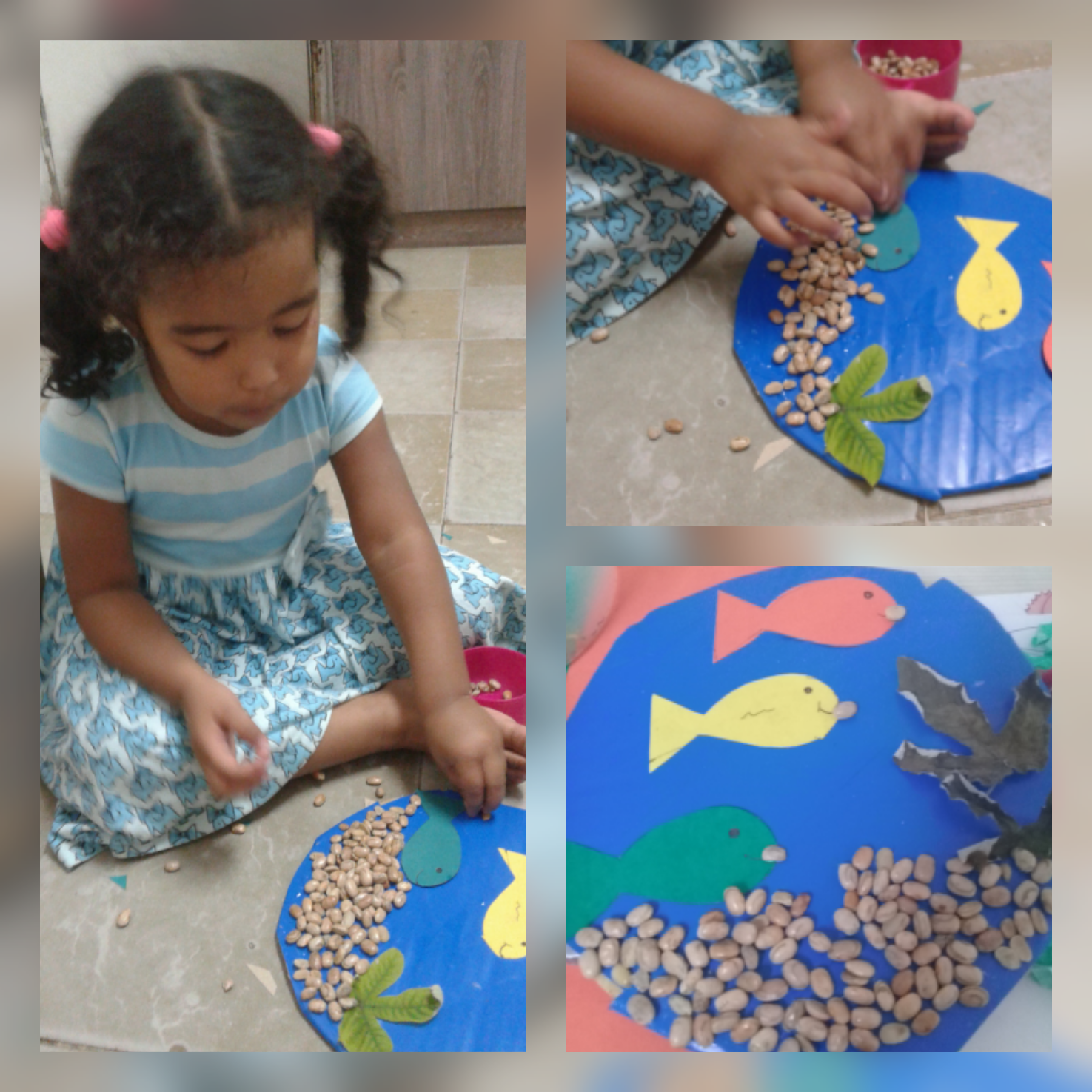
_ After performing the activity gave him to eat each fish.
Turtle with shell of leaflets.
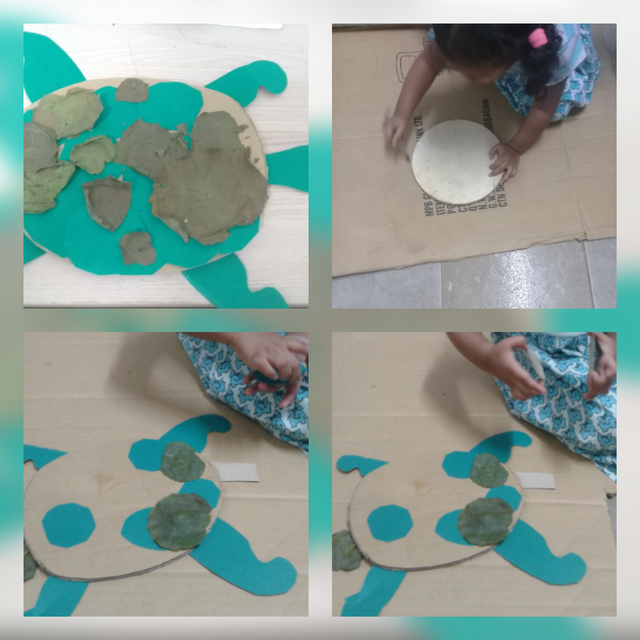
These activities can also be carried out by pre-schoolers of 2-3 years of age, led by educators.
Thank you for your attention, until a next post.
As always, I appreciate an upvote if you liked the post, a follow up if you want to keep up with my work, and please leave a comment that let me know what you think.

